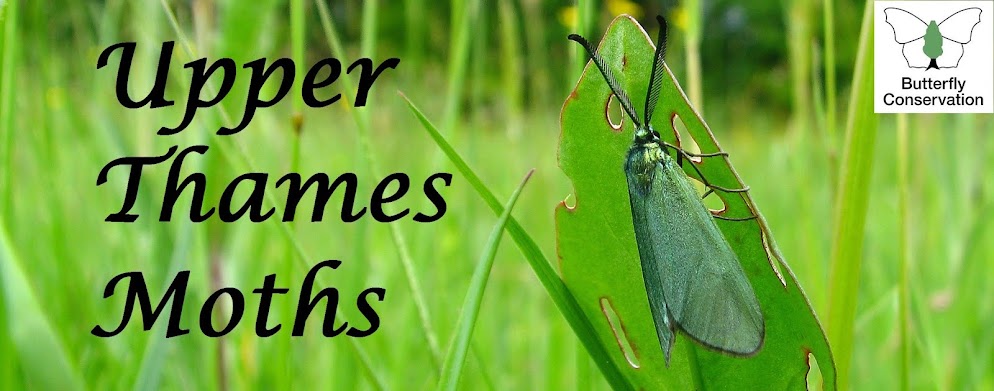The last seven nights have proved to be much quieter with only 23 different species coming to light here at Westcott, despite some potentially good weather for migrants, and it is looking increasingly likely that the 2020 garden year list won't be added to now. The current regulars are December Moth, Winter Moth, Feathered Thorn, Scarce Umber, Mottled Umber and Sprawler. Two of those species are illustrated below, of which the Scarce Umber appeared to have walked through a puddle on its way to the light!
 |
| Feathered Thorn female, Westcott 14th November |
 |
| Scarce Umber, Westcott 14th November |
Migrant species which made it to Westcott on the warmer nights comprised Plutella xylostella, Udea ferrugalis and Silver Y. The White-point shown below may well have been a migrant too because it was in such good condition. I've only had one other November record of the species (6th November 2018).
 |
| White-point, Westcott 12th November |
Most of our deciduous trees and shrubs have dropped their leaves so I'm unlikely to find any more leaf-miners either, although that hasn't stopped me from looking for "green islands" on fallen leaves. I've been concentrating on the ground under our large willow (S. babylonica) because an active mine of Ectoedemia intimella was found on a fallen leaf back in 2014, a sighting I've never managed to repeat. My searches have been successful in tracking down two or three dead leaves with the tell-tail green patches around a mine, but so far they've all turned out to be those of Stigmella obliquella containing deceased larvae.
Dave Wilton Westcott, Bucks

Why does the good condition of the White-point make it more likely to be a migrant? Could it not equally be a probable third brood like the 2 Shuttle-shaped Darts Ive had this month?
ReplyDeleteThat's a possibility indeed, but it arrived on a good migrant night and migrants usually turn up in good condition. It wasn't all that long ago that White-point was only found here as a migrant and just because it is now established doesn't mean that migration stops. The pair that I had on 6th November 2018 also came during a period of south-easterly winds when other migrants were around. However, we'll never know for sure where they came from!
ReplyDeleteShuttle-shaped Dart is interesting and I see that the phenology chart in the BC Atlas is already showing signs of a partial third brood prior to 2016. My last example this year was on 1st November but I've had later ones (eg 7th & 15th November 2018).
My A.puta were also fresh but unlikely as migrants. You simply can't tell anytihng from condition. Good migrant nights are generally good moth nights!
ReplyDelete